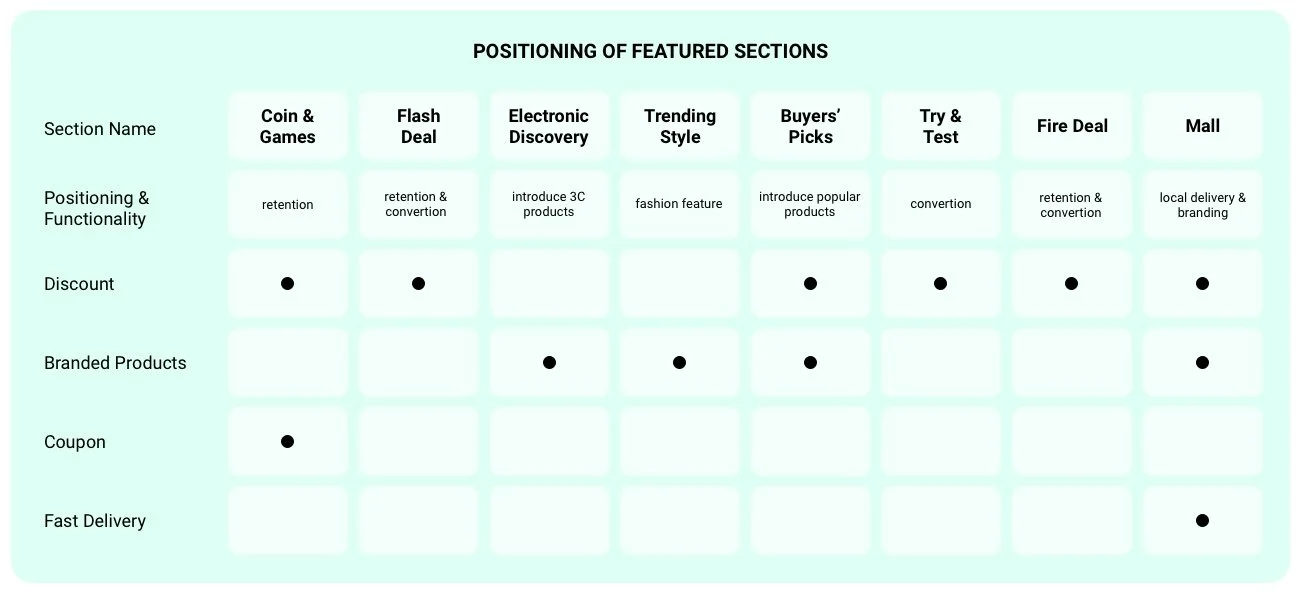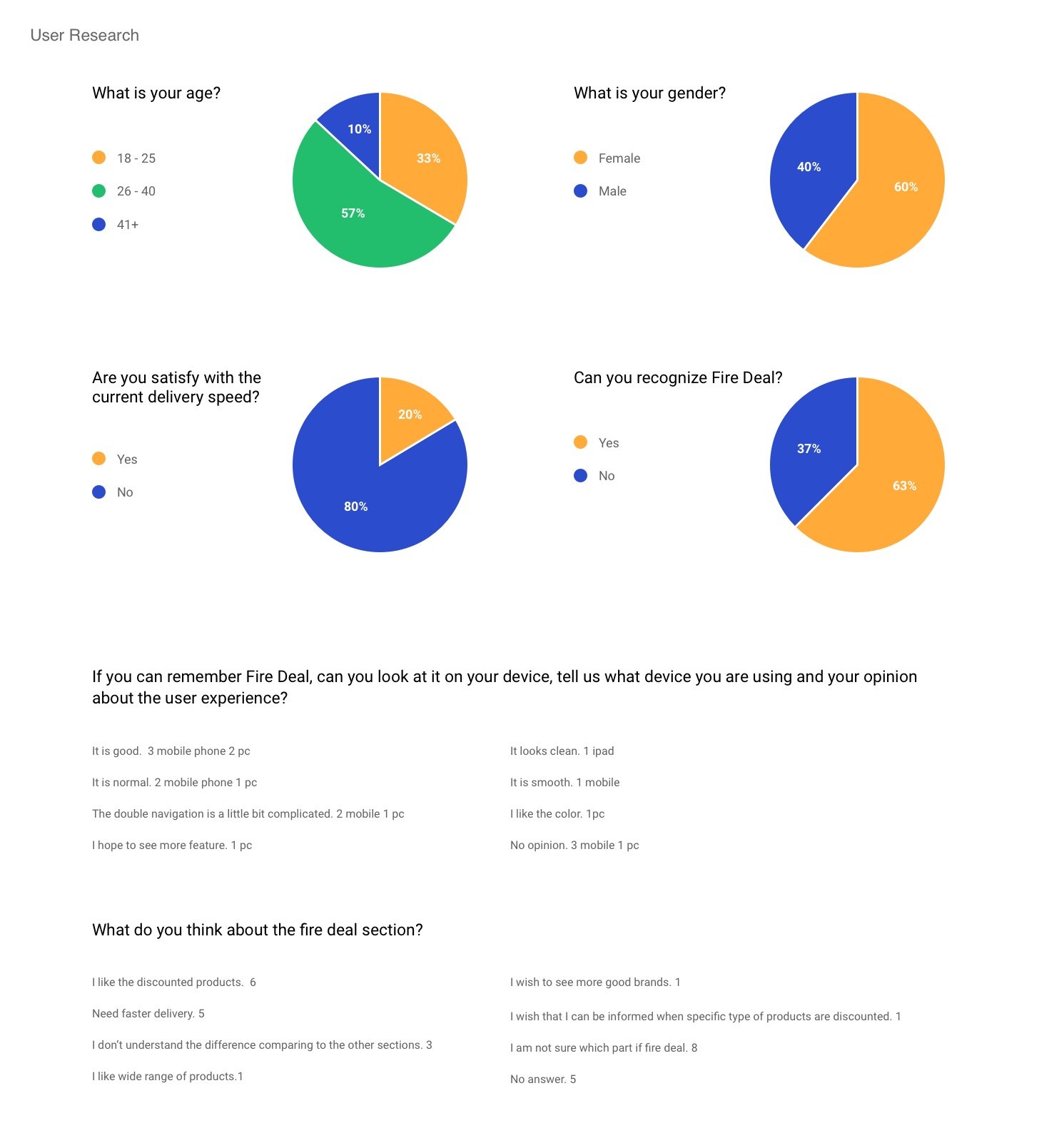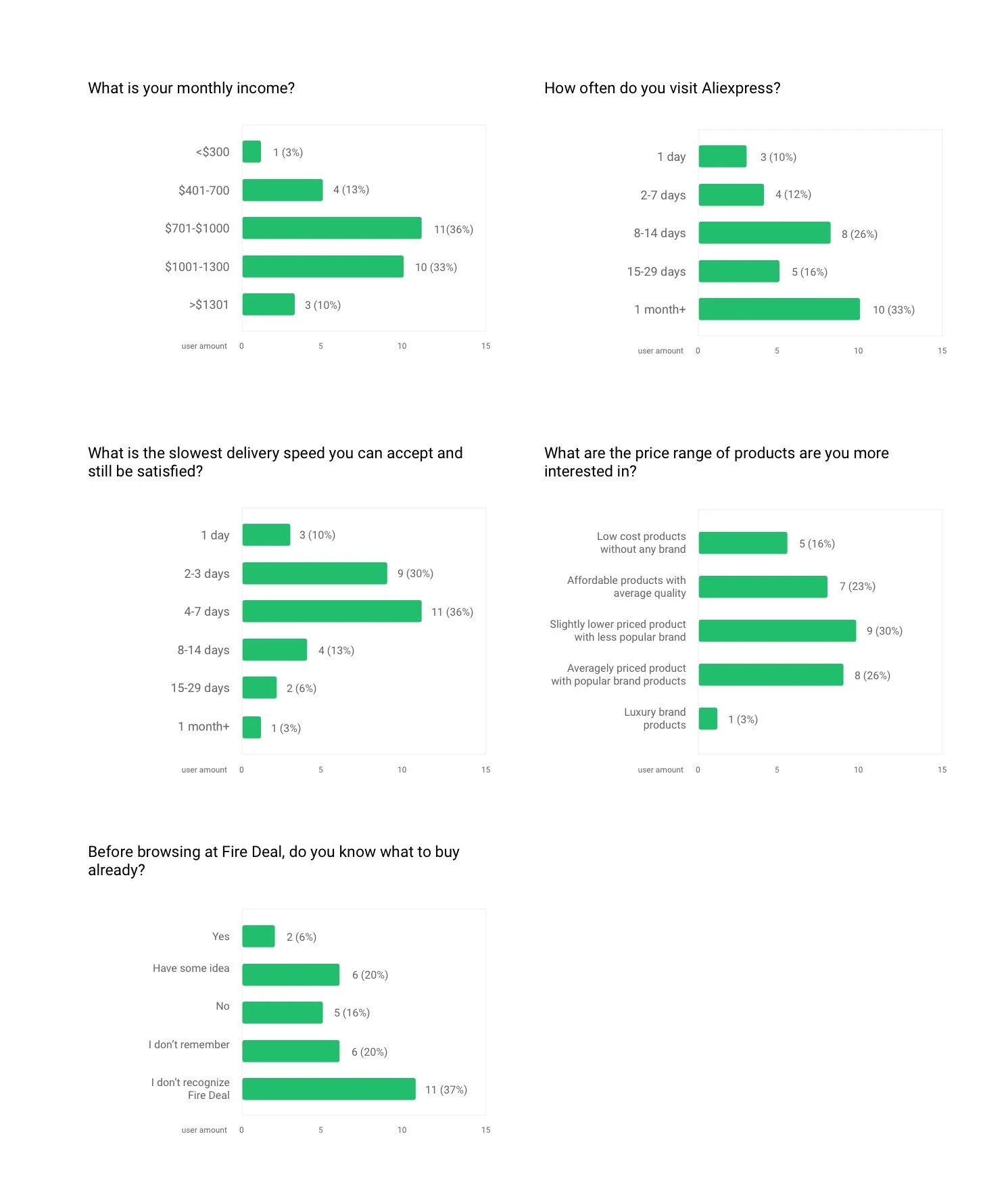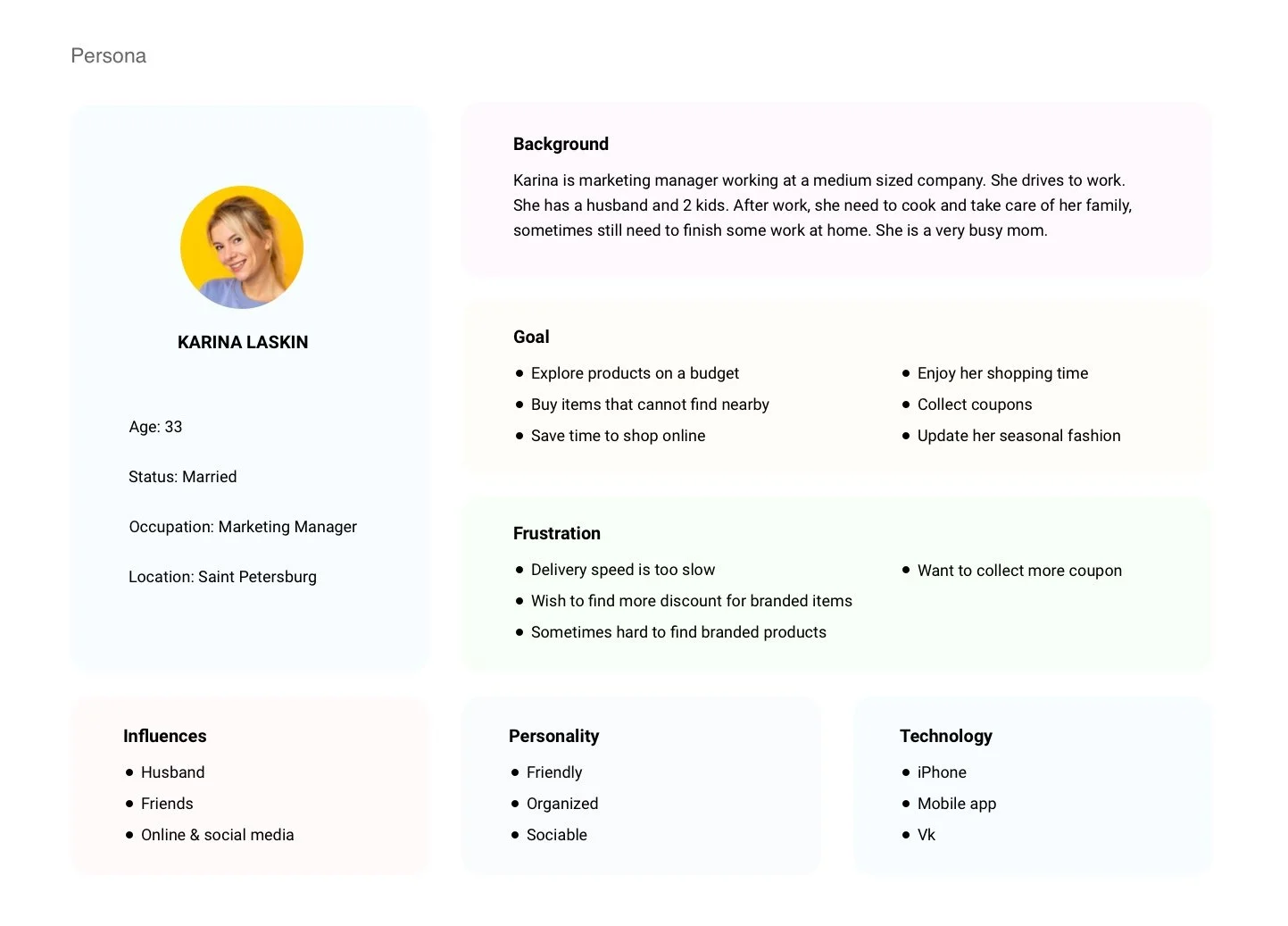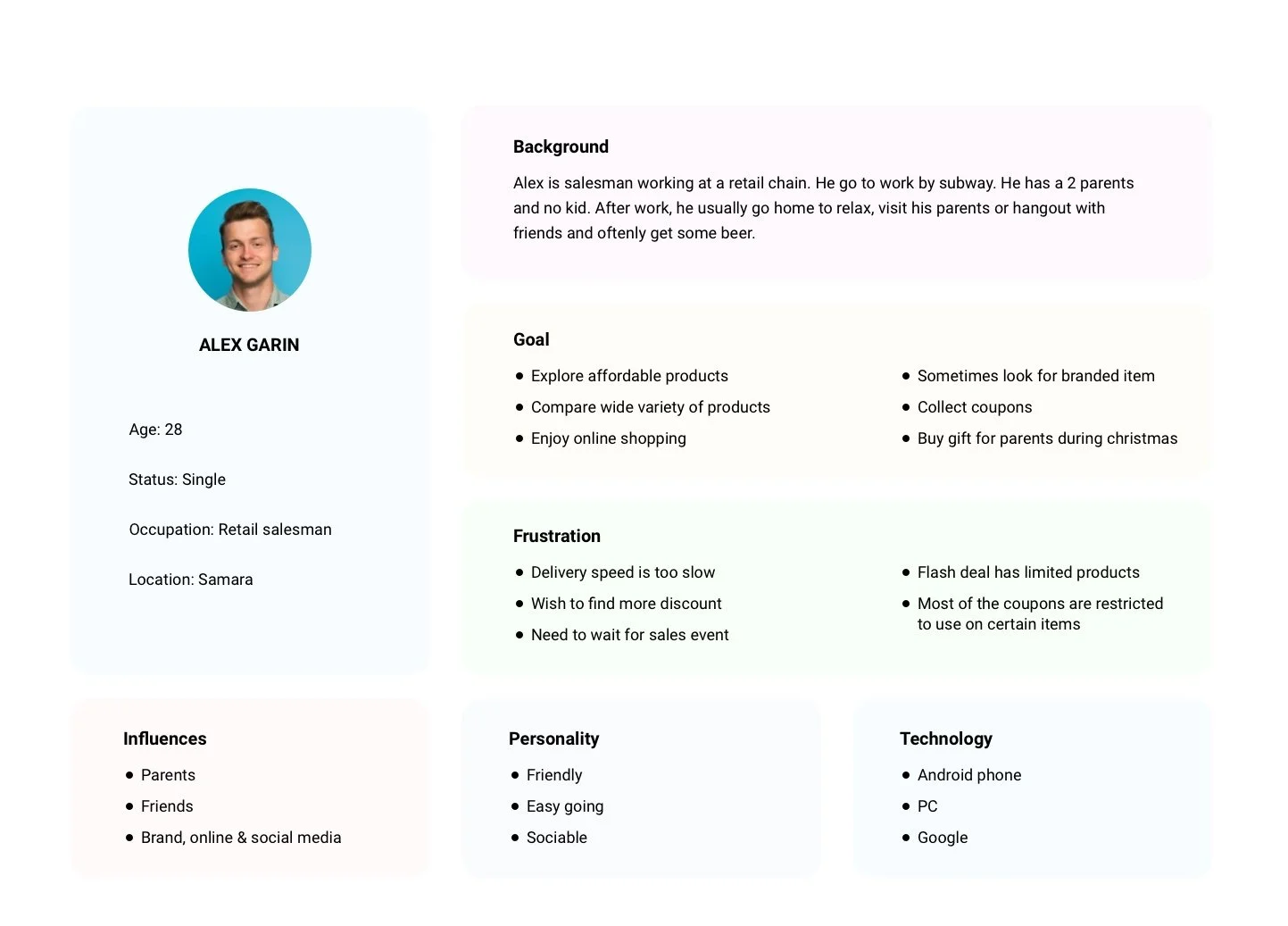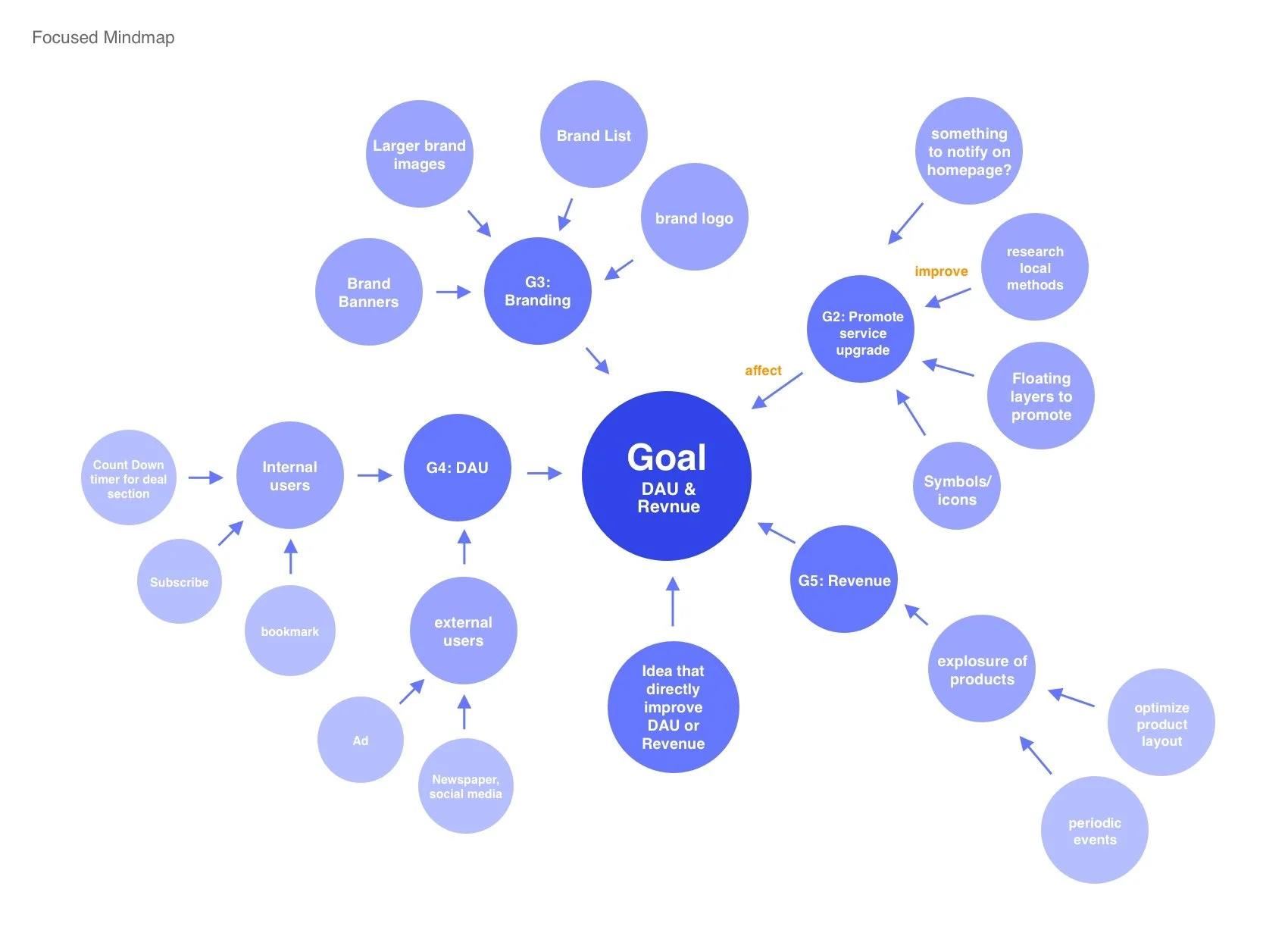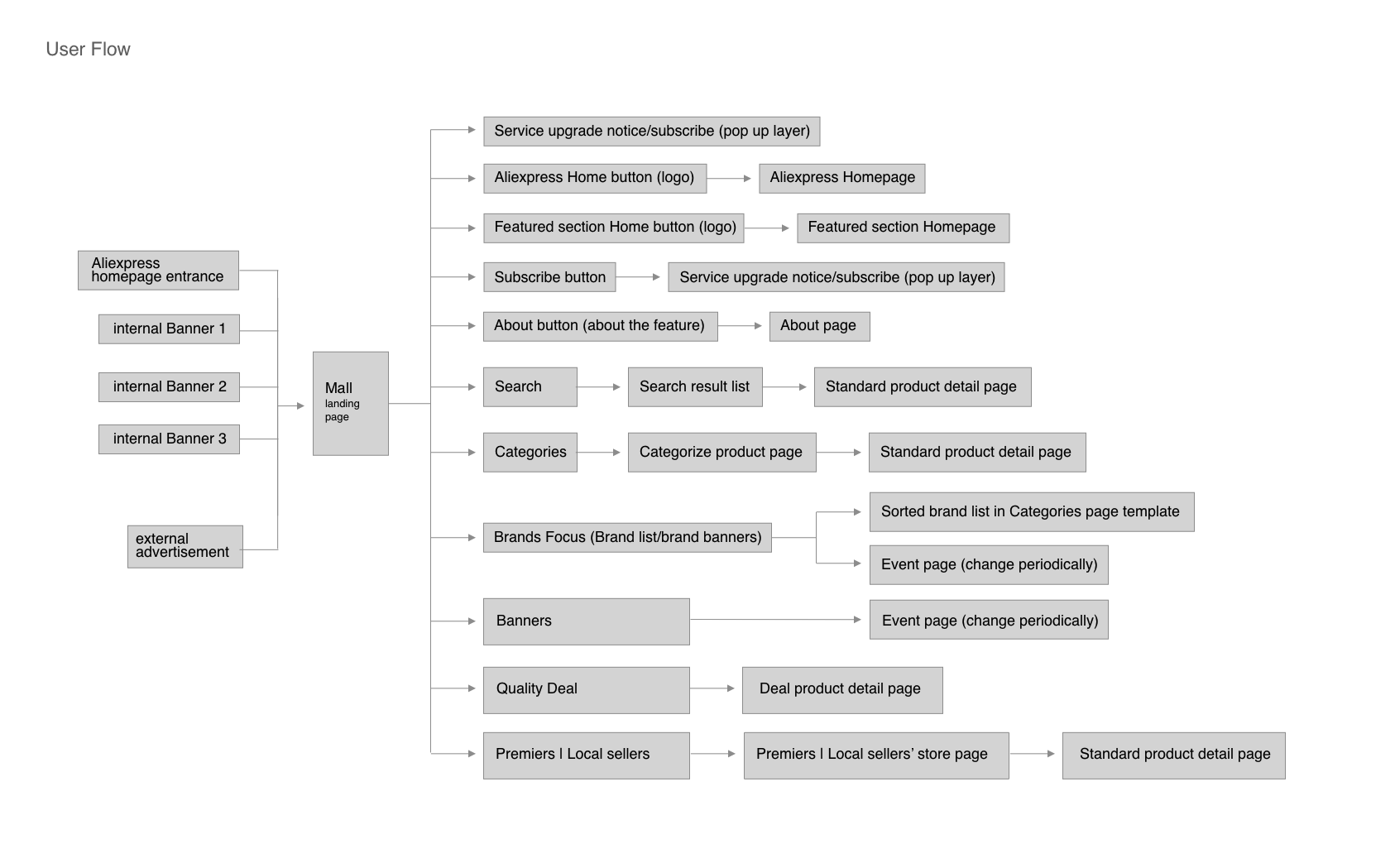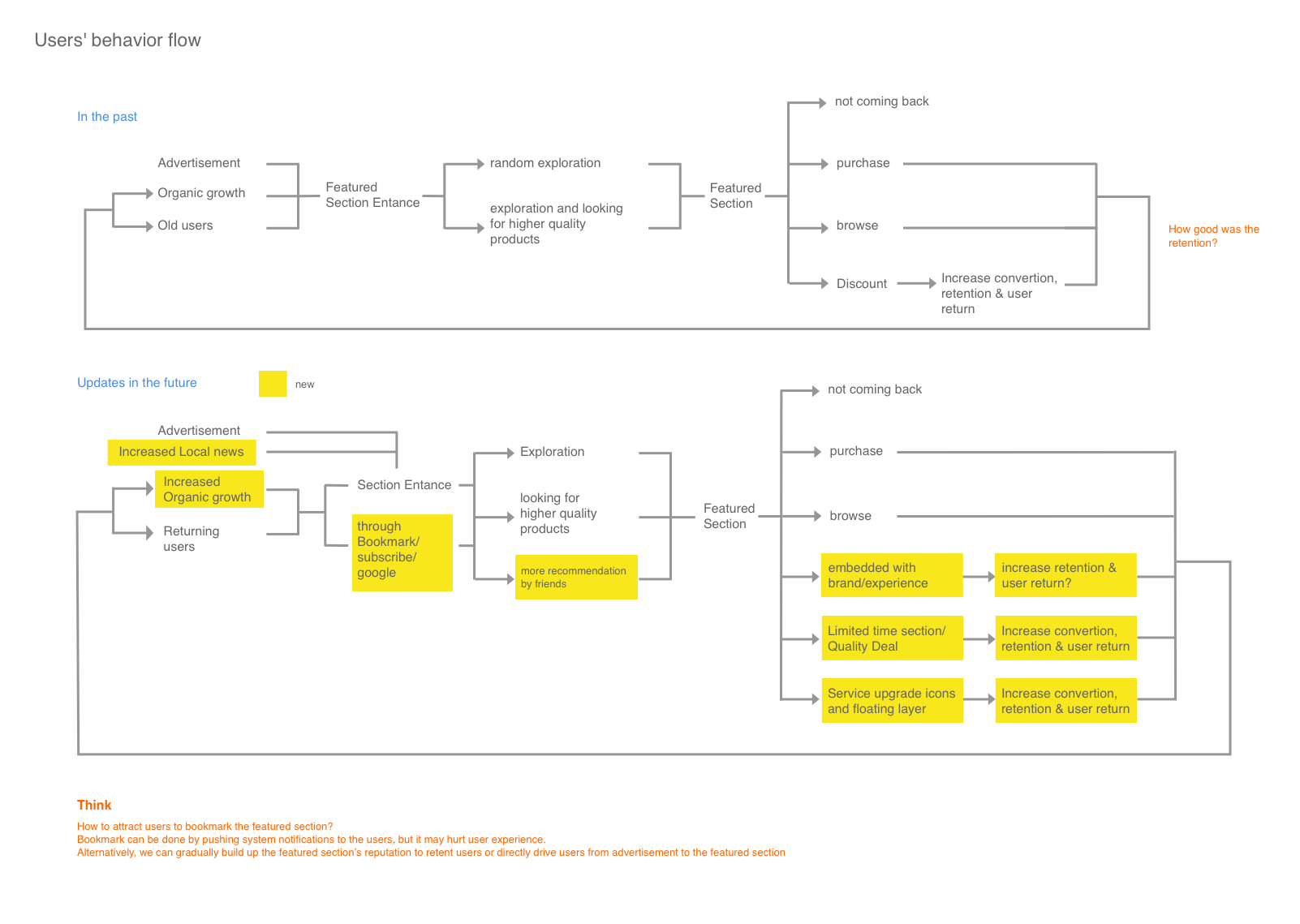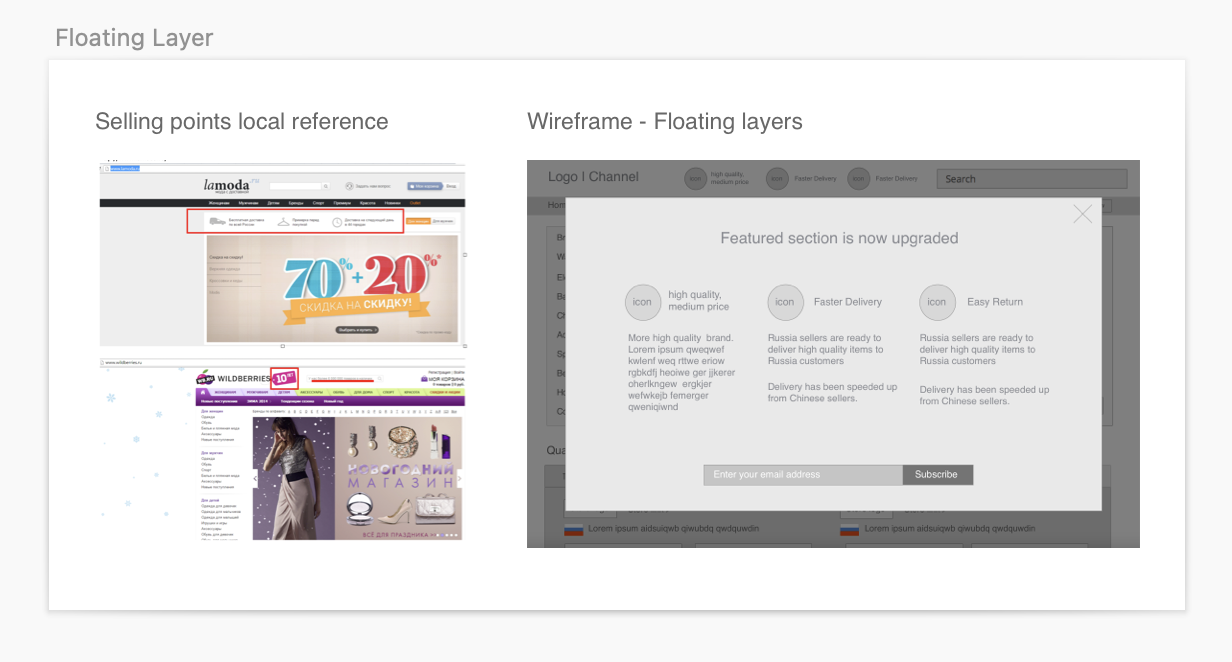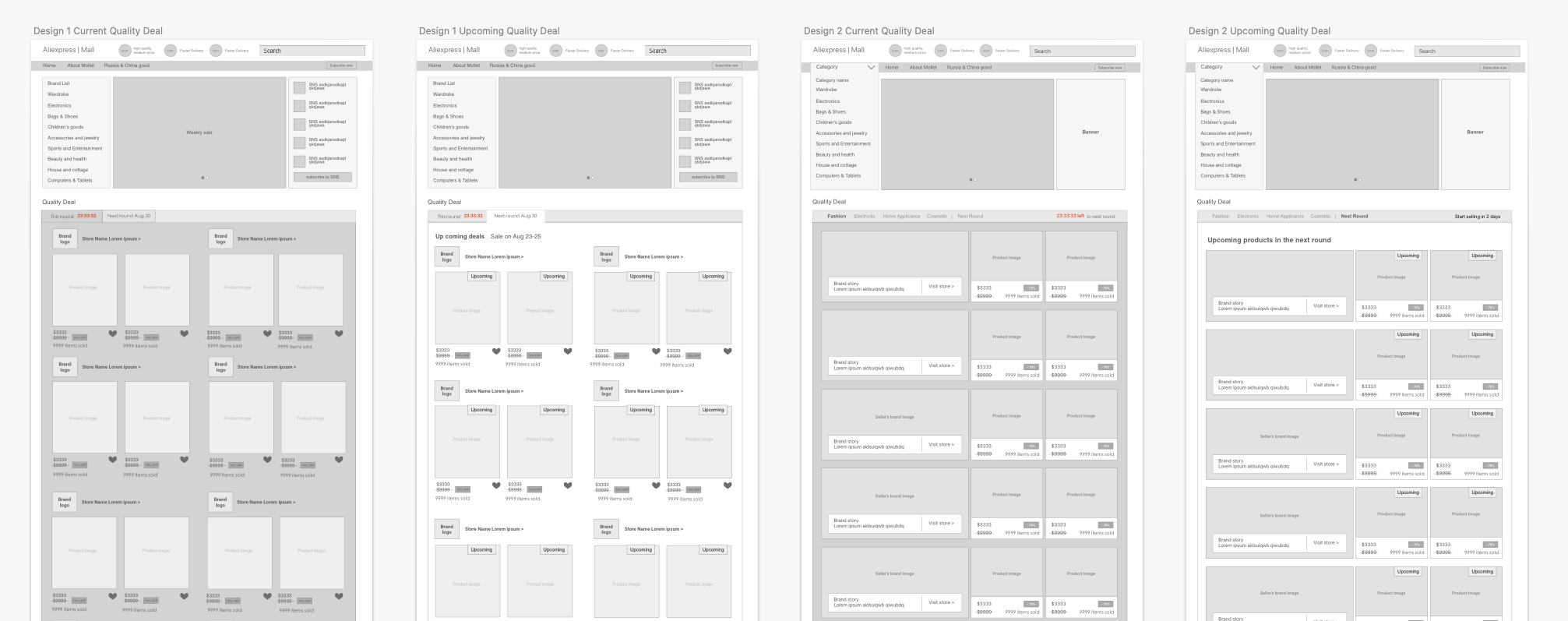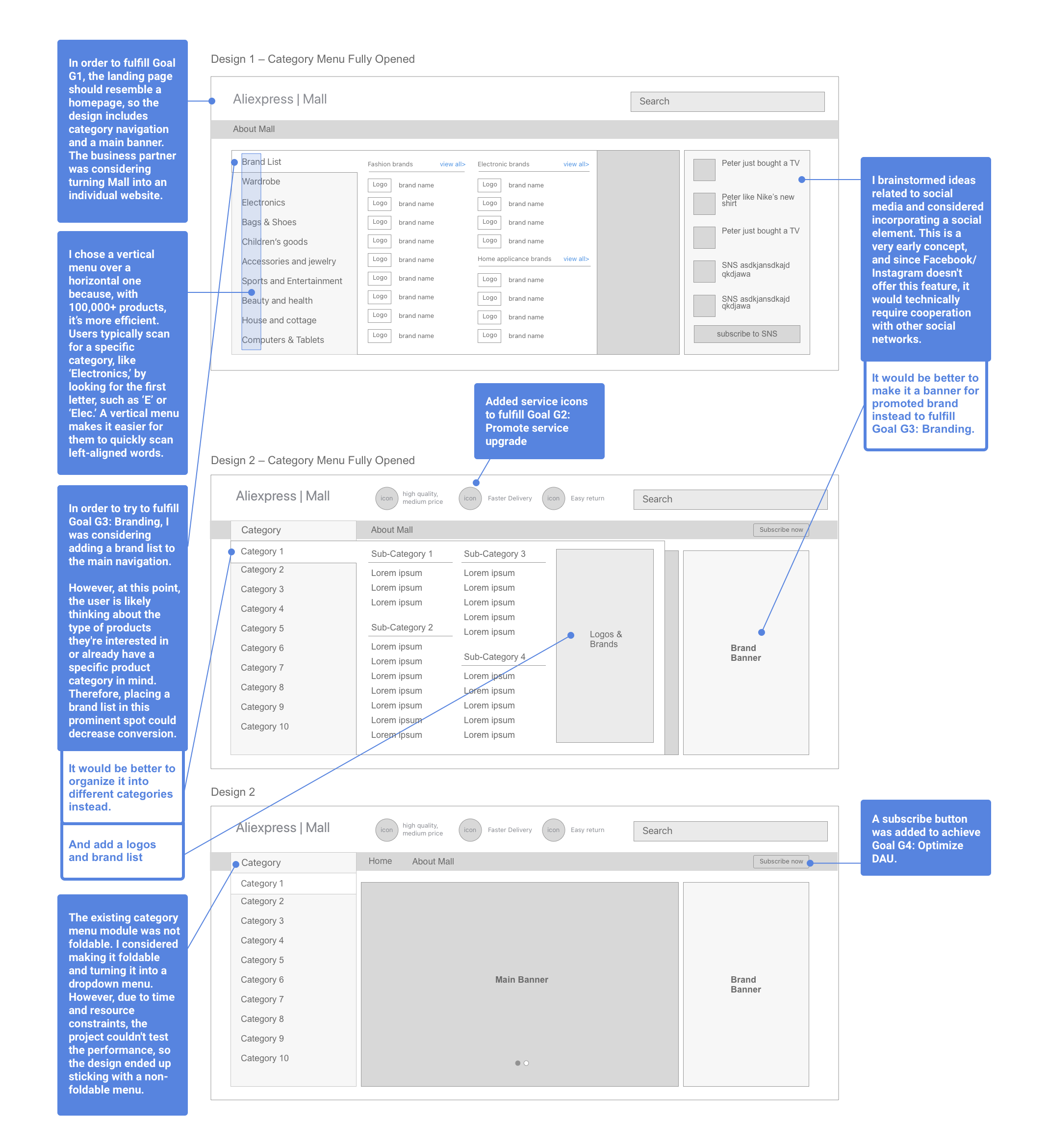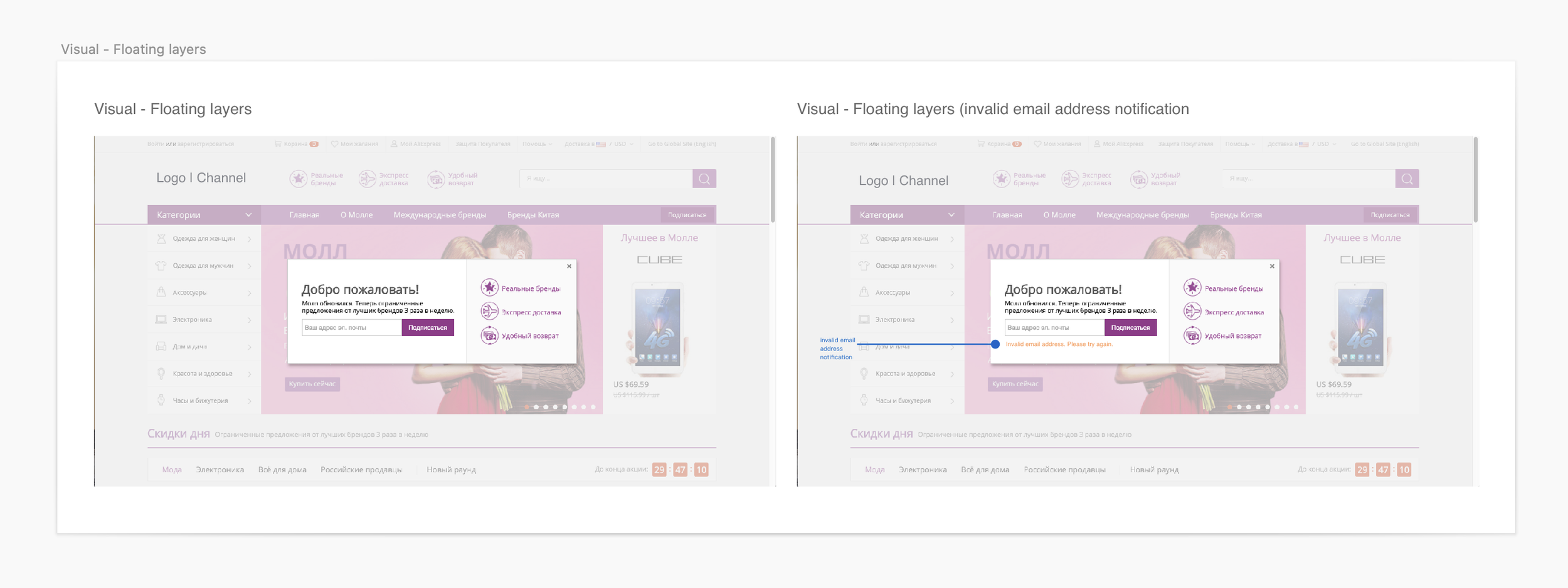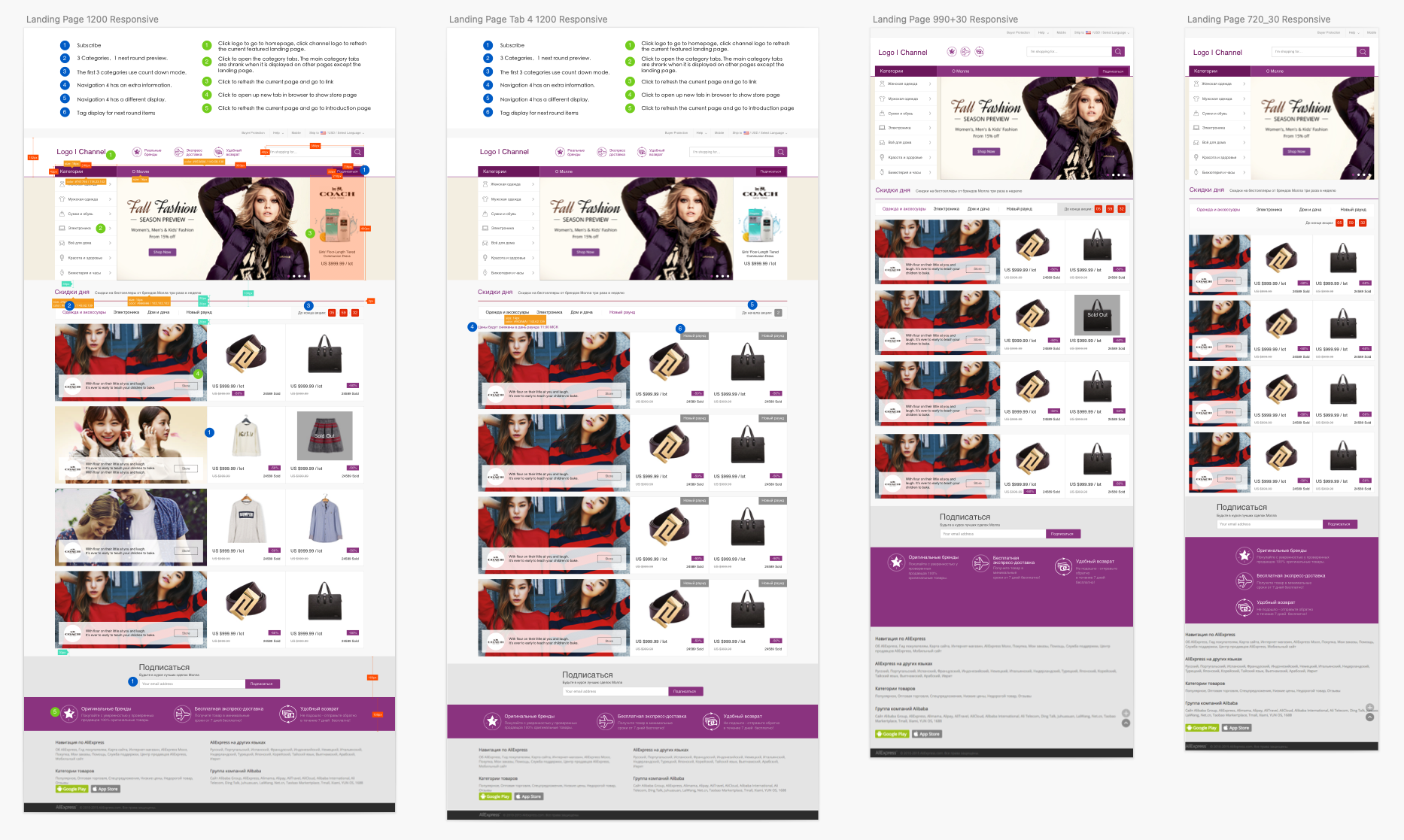
ALIEXPRESS - MALL
The project is a product delivery localization upgrade for Aliexpress, a global ecommerce platform. The upgrade is only limited to this Mall section. This upgrade acted as pioneer and transition to bring the platform to launch more localization in more countries.
BACKGROUND
Mall was a section on Aliexpress. It had a very prominent position in the navigation bar. Mall was designed to replace Fire Deal, which focused on discounts. This shift repositioned the market to sell and deliver branded products locally within 3 days, rather than taking 2 to 3 weeks to ship from another country. The prices of the items were higher, while the product quality was better.
Goal
G1: The landing page should resemble a homepage as it was requested by business partner for strategy purpose.
G2: Promote service upgrade.
G3: Input branding
G4: Optimize daily active user
G5: Optimized revenue.
APPROACH
We started by understanding the project’s pain points and identifying the needs of the customers. To gather enough information for making informed decisions, we began with existing competitor analysis, data research, and user research. Since we didn’t have months to travel to the targeted country to test the prototype with users, the research and analysis became crucial.
User Research
Here are some examples of the user research, which was conducted in an interview format. The actual amount of user research was much greater, and I can't show everything here since it would take too long to read.
Persona
Brainstorming on a Focused Mindmap
I used to expand my thoughts and brainstorm ideas using a traditional mind map. However, the traditional mind map proved less effective, as it often led me to ideas that were irrelevant to the goal. As a result, I adapted the methodology to make it more goal-oriented. Here, I’ve included an image showing how I made the brainstorming process more goal-oriented for this project.
During this process, I began thinking about how to achieve the project’s goals. Goal G1 was to design the page like a homepage, so the solution was already determined and I did not include it in the brainstorming process. For the other goals of the project—G2: Promote service upgrade, G3: Input branding, G4: Optimize daily active users, and G5: Optimize revenue—these were included in the brainstorming process.
User Flow
After brainstorming, I started working on the user flow to think about how do I apply the ideas and it was good to start looking at the general structure of the design.
Users’ Behavior Flow
In this step, I aimed to assess the potential impact of the ideas I brainstormed by comparing them with the previous version.
Generally, user flow allows us to plan the inclusion of content. However, to focus on the results and the project's goals, I needed to take a deeper step and consider the users' behavior behind the user flow. It’s the users' behavior that actually impacts the result.
The project's goals—G2: Promote service upgrade, G3: Input branding, G4: Optimize daily active users, and G5: Optimize revenue—were considered in my thought process while working on this flow.
RESEARCH LOCAL EXAMPLES & PROTOTYPE
I also researched local designs and tried to adapt them as part of the design localization.
Due to the importance of the project, I was also allowed to implement a floating layer in the design.
The project's goal—G2: Promote service upgrade—was addressed with this floating layer design. We conducted user research after the project launch. More than 90% of users who browsed Mall were informed about the service upgrade and expressed interest in browsing or shopping at Mall again.
DESIGN EXPLORATION
In this step, I explored several design solutions and selected two options to consider. For the image shown below, wireframes 1 and 2 (from the left) represent Design Option 1, while wireframes 3 and 4 represent Design Option 2. Option 1 focuses on increasing the click rate and displaying more products, while Option 2 allocates more space for brand images and allows users to click on the brand images to navigate to the brands' store pages on AliExpress.
DESIGN RATIONALE
Besides my thoughts and reasons behind the design, I have also highlighted some of the goals fulfilled in the images below.
SOLUTIONS
After meeting with the product manager and business partner, we identified the technical constraints and possibilities. We decided to incorporate the best elements into the final solution and then visualize it. After launching the project, we discovered that 90% of users who visited the featured section were aware that the products were shipped locally from Russia. A significant portion of users also recognized that the products were more branded compared to others. Product prices were 30% to 200% higher than in the previous section, while conversion rates saw a slight increase. Additionally, daily active users grew.
IMPACT
This project was a successful business transition and set a precedent for scaling localization efforts. It has since been replicated in other countries.
+30-200%
Products Price Range
>90%
Users' Awareness of the New Localized Delivery
+6%
Daily Active Users
